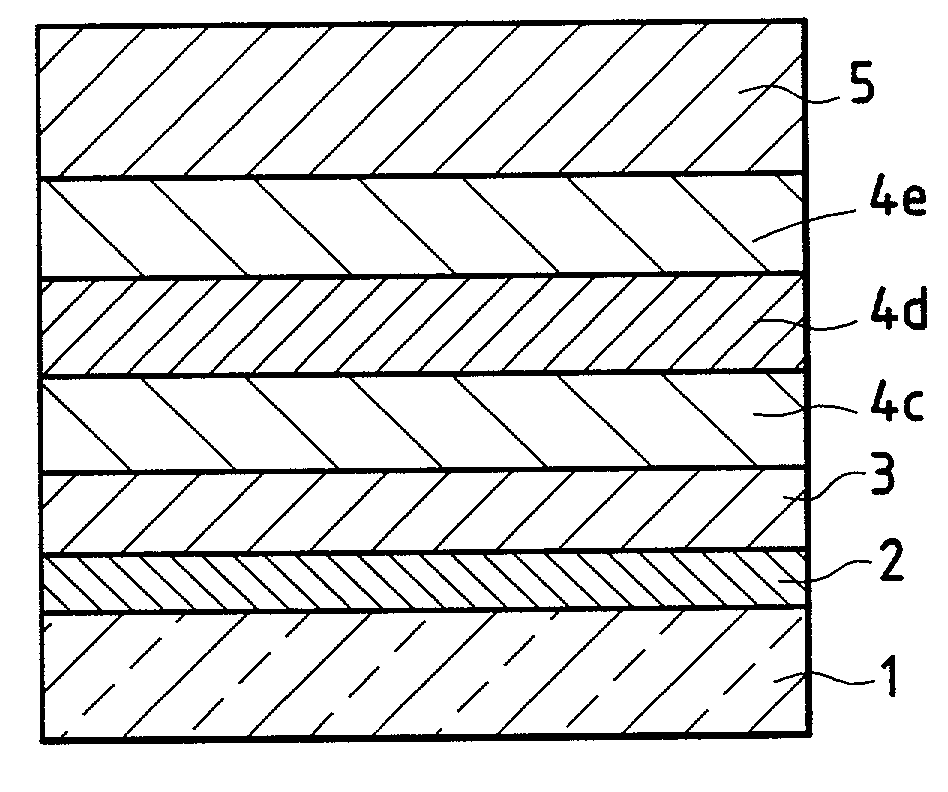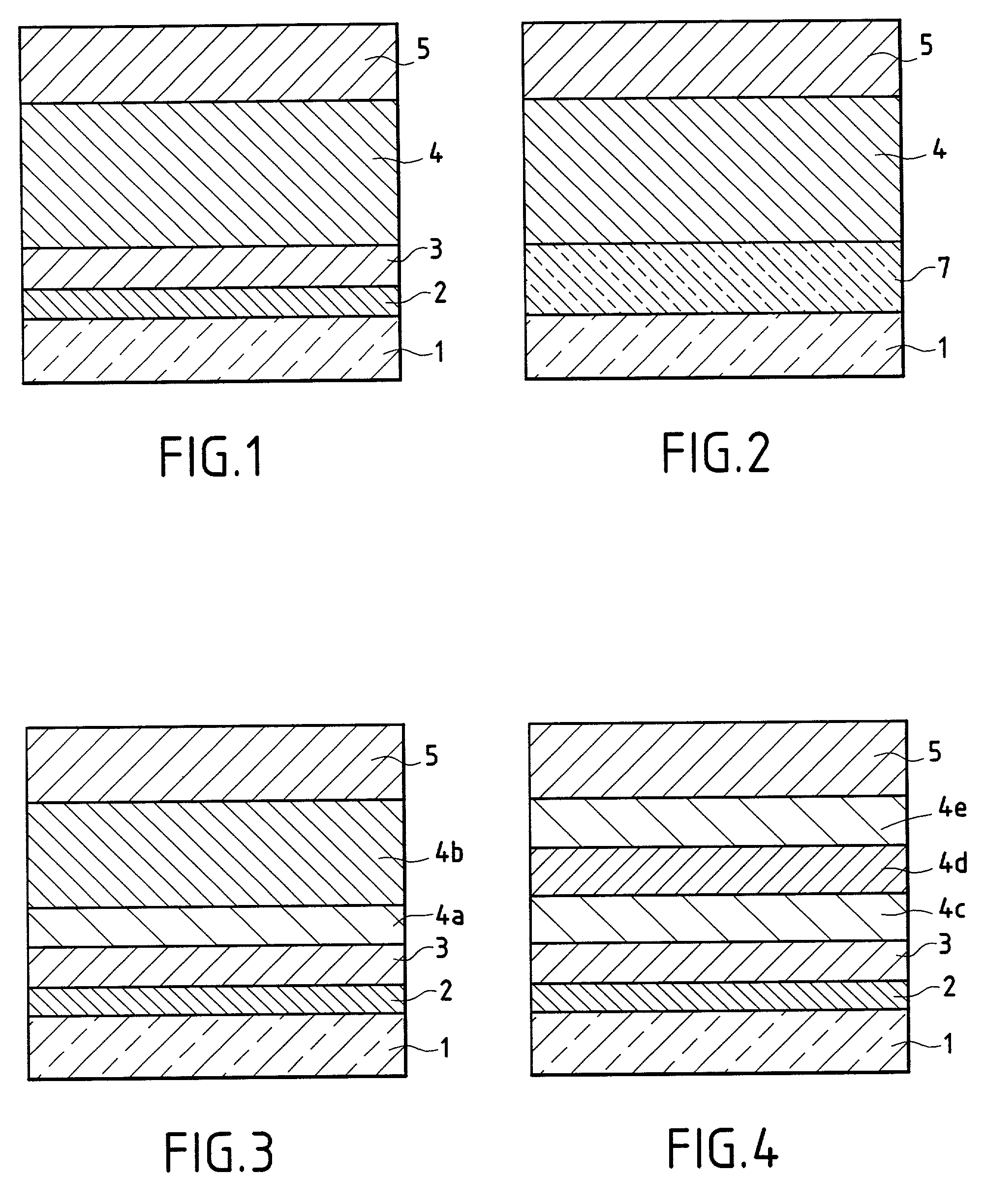Transparent substrate with an antireflection, low-emissivity or solar-protection coating
a technology of transparent substrates and solar protection coatings, applied in the field of transparent substrates, can solve problems such as unsatisfactory stability
- Summary
- Abstract
- Description
- Claims
- Application Information
AI Technical Summary
Benefits of technology
Problems solved by technology
Method used
Image
Examples
example 1
[0073]This example corresponds to FIG. 1 and comprises a glass 1 coated with an antireflection multilayer stack according to the invention 6 which is composed of two high-index thin layers 2, 4 and two low-index thin layers 3, 5. The low-index layer 3 is made of SiO2; the low-index layer 5 is a mixture of silicon and aluminum oxides SiAlxOy (approximately 10 atomic percent % of Al with respect to Si); the high-index layer 2 is made of SnO2; and the high-index layer 4 is titanium oxide modified by partial nitridation according to the invention, the material corresponding to the formula TiOxNy with the level of nitridation being adjusted in order to achieve a refractive index of about 2.35 at 580 nm, i.e., a nitrogen ratio in percent by volume, N2 / (N2+O2+Ar), of about 15 to 20% in the deposition chamber.
[0074]Table 1 below gives the index and the physical and optical thicknesses of the layers in the multilayer stack.
[0075]
TABLE 1PhysicalOpticalGlass (1)IndexThickness (nm)Thickness (nm...
example 2
[0076]This example repeats the multilayer stack of Example 1, but replaces, as shown in FIG. 2, the layers 2 and 3 with a single intermediate-index layer 7 made of silicon oxynitride SiOxNy, the nitrogen content of which is varied in order to adjust the index to a value of about 1.78.
[0077]Table 2 gives the index and the physical and optical thicknesses of the layers in the multilayer stack for this three-layer coating.
[0078]
TABLE 2PhysicalOpticalGlass (1)IndexThickness (nm)Thickness (nm)SiOxNy (7) 1.7860107TIOxNy (4)≈2.35 118.5 278SiAlxOy (5)≈1.4885126
example 3
[0079]This example repeats the three-layer stack configuration of Example 2, but uses another type of modified titanium oxide layer. Instead of layer 4 being TiOxNy, layer 4 is a layer of titanium oxide containing tantalum with a Ta / Ti atomic percent proportion in the layer of about 10 to 15%, preferably 13% (a Ti—Ta alloy target in suitable proportions is used), so that the index of the layer is about 2.33 to 2.40, preferably 2.35 (the optical thicknesses are the same as in Example 2).
[0080]The following multilayer stack is therefore obtained:
[0081]It was confirmed that the tantalum-modified titanium oxide allowed deposition rates to be achieved that were 40% higher than those with TiO2.
PUM
| Property | Measurement | Unit |
|---|---|---|
| refractive index | aaaaa | aaaaa |
| refractive index | aaaaa | aaaaa |
| refractive index | aaaaa | aaaaa |
Abstract
Description
Claims
Application Information
 Login to View More
Login to View More - R&D
- Intellectual Property
- Life Sciences
- Materials
- Tech Scout
- Unparalleled Data Quality
- Higher Quality Content
- 60% Fewer Hallucinations
Browse by: Latest US Patents, China's latest patents, Technical Efficacy Thesaurus, Application Domain, Technology Topic, Popular Technical Reports.
© 2025 PatSnap. All rights reserved.Legal|Privacy policy|Modern Slavery Act Transparency Statement|Sitemap|About US| Contact US: help@patsnap.com



